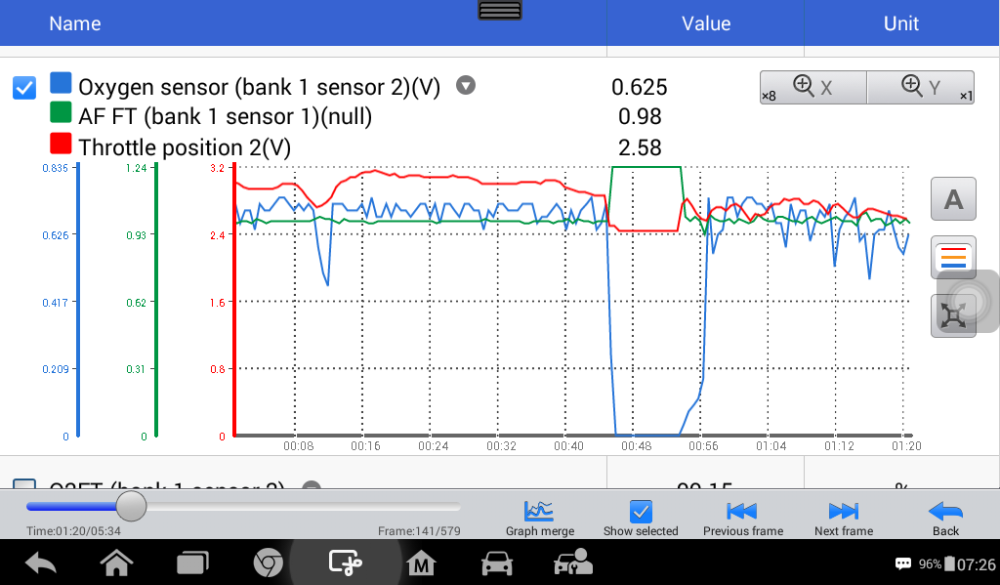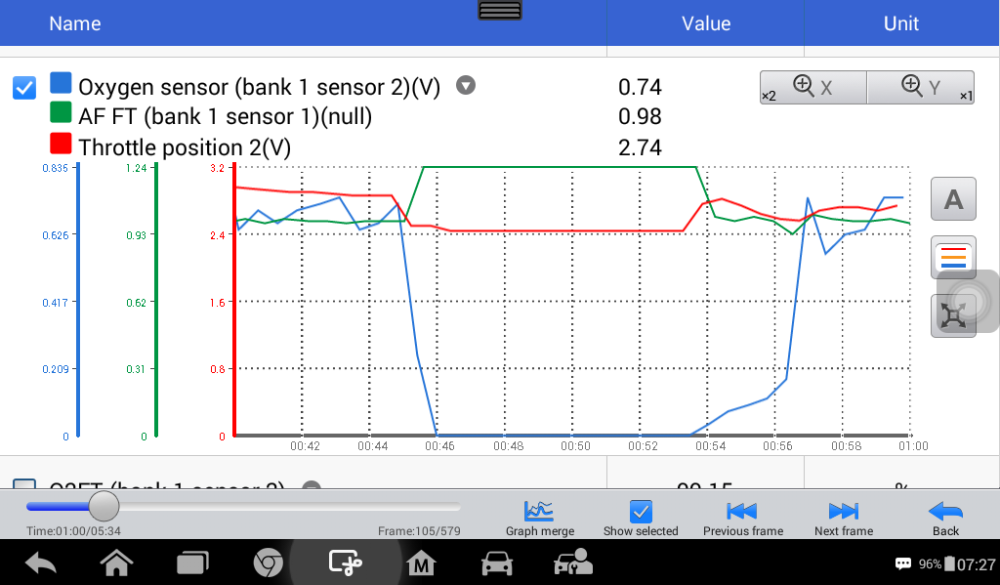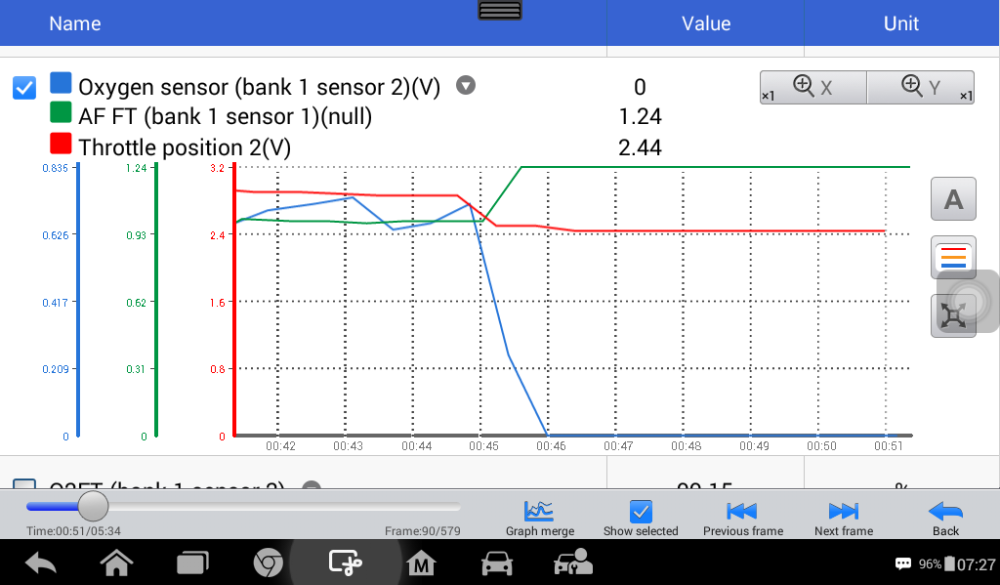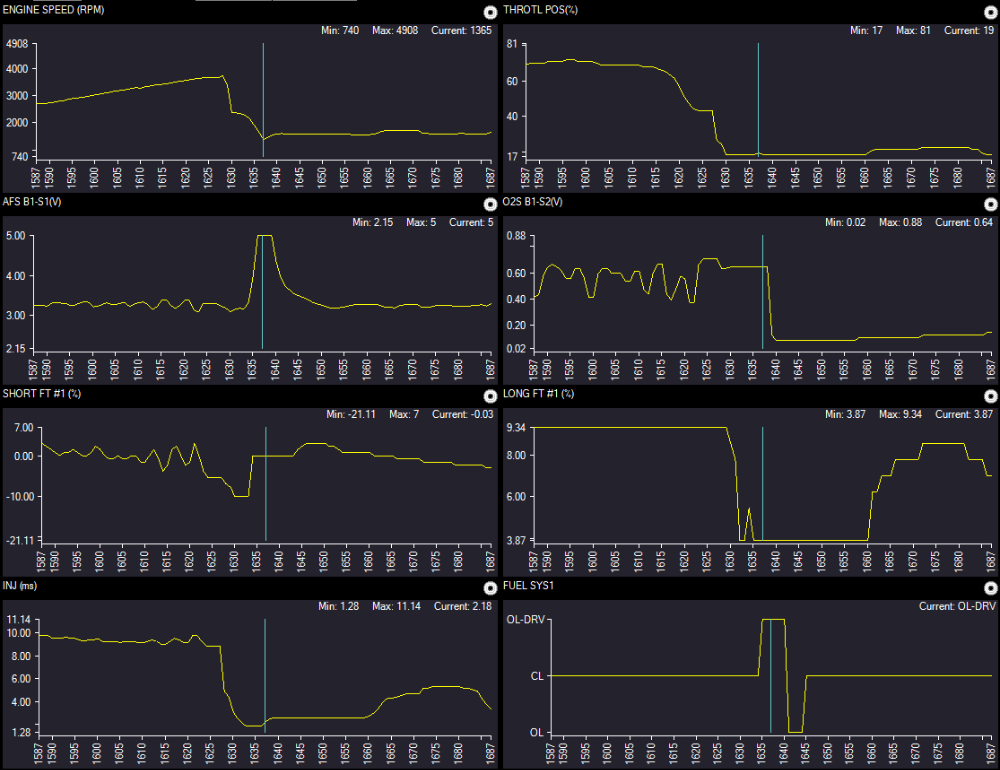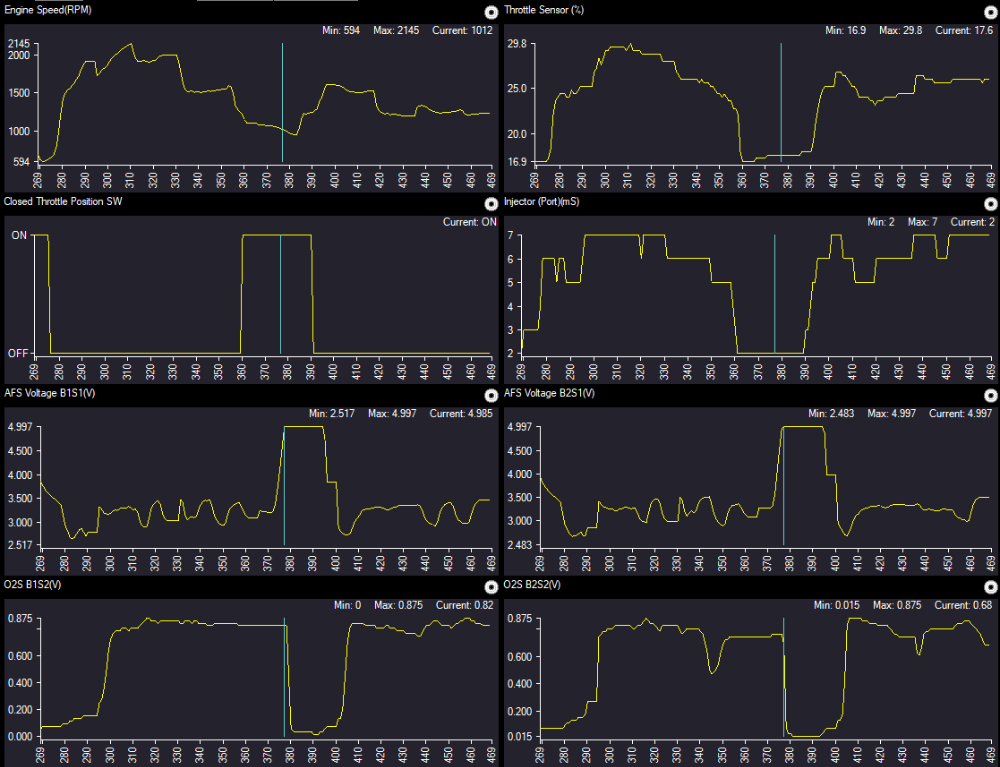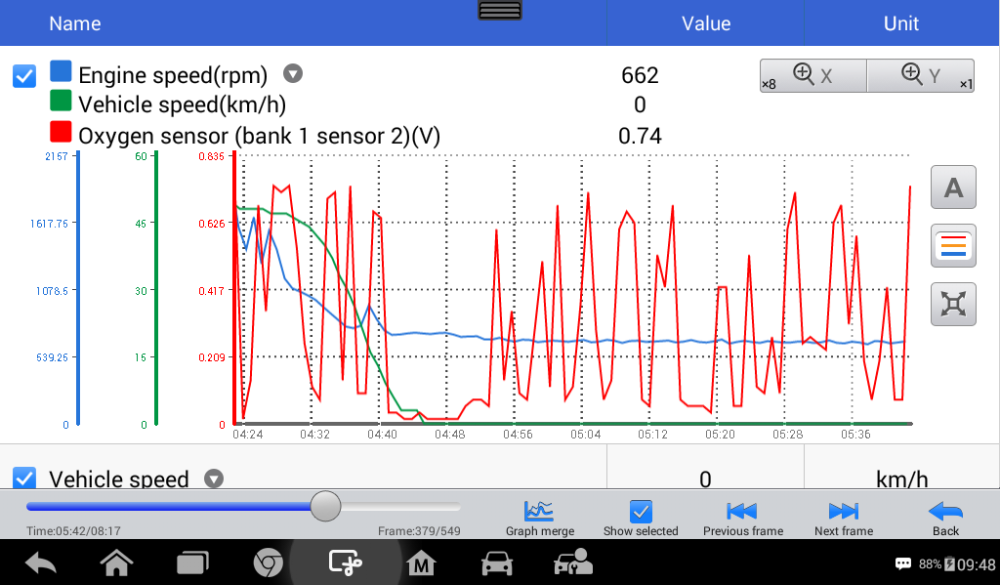*** Restricting New Posts to SD Premium Members ONLY *** (09 May 2025)
Just made a new account? Can't post? Click above.
'03 Toyota Camry P0420 Diagnosis: Does My Methodology Make Sense?
- The_Floss
-
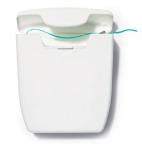 Topic Author
Topic Author
- Offline
- New Member
-

- Unwaxed with a hint of peppermint
- Posts: 16
- Thank you received: 4
Bit of back story. Car is an '03 Camry with the 4L 2AZ-FE engine. 178,000 miles.
I believe this cat issue is my fault, since 2 years ago I let a flex pipe leak go unfixed for months (Winter had also just started, and I don't have a garage), with the engine running with very positive fuel trims.
Well I finally got my act together and welded a new pipe on and got the trims back to normal, but some time after that, the P0420 code came up.
My guess is all the extra fuel poisoned the cat.
Now with that out of the way, here is my process.
I have been monitoring the down stream O2 at a lot of different conditions, and I notice that it's a very noisy signal, fluctuating between rich and lean at idle at around 1 to 0.5Hz. That right there is a red flag.
I next tried to perform an O2 retention test with propane enrichment, but the down stream O2 would not react. I'm not sure if it has to do with the fact that the A/F upstream sensor can provide a greater and faster degree of trim control, I am not introducing enough propane (the STFT dropped immediately but stabilized around -9% with no change in O2B1S2), or if the Toyota down stream O2 heaters turn off at idle because the cat check doesn't occur unless the car is between 2.5 and 3k rpm and at speed. Regardless, the enrichment test seems out of the question at this point.
However, I realized that I could probably perform a similar test using the deceleration enlivenment mode. There's a pretty steep hill on the highway I commute on, so I grabbed my scan tool and recorded the data accelerating up the hill to 60mph, and then snapping the throttle closed at the crest. The data is below:
The first image is the zoomed out view of the waveform, and you can see when I lift off, the upstream and down stream go very lean.
The other two zoomed in images of the lift off event show that there is no delay between the upstream A/F sensor, and the down stream O2.
At this point, I'm starting to think I'm going to have throw down a good chunk of change on an OEM cat, but I know I need to check the O2.
My goal is to check the bias voltage this weekend as well as the heater voltage (not sure if it's PWM or constant but I have the standard value in a book somewhere). As for the sensor itself: I think it's good since it responds to changes in exhaust composition from 0 to 700mV.
What do you think guys? Does it look like my methodology is good? Did I make some stupid assumptions about Toyota fuel delivery and exhaust subroutines?
Thanks guys. I appreciate the help.
Please Log in or Create an account to join the conversation.
- Tyler
-

- Offline
- Moderator
-

- Full time HACK since 2012
- Posts: 6039
- Thank you received: 1518
The_Floss wrote: I believe this cat issue is my fault, since 2 years ago I let a flex pipe leak go unfixed for months (Winter had also just started, and I don't have a garage), with the engine running with very positive fuel trims.
Well I finally got my act together and welded a new pipe on and got the trims back to normal, but some time after that, the P0420 code came up.
My guess is all the extra fuel poisoned the cat.
How positive were the trims? :huh: I don't doubt that the flex pipe was leaking - they all do on this generation of Camry - but did the fuel trims get better after the flex pipe replacement? Because I've seen tons of these cars with exhaust leaks and normal trims.
Not that it matters at this point, but I don't think the cat code and your flex pipe leak are related. Both parts are problematic by themselves. I usually find that the cat code is more related to mileage than anything else.
I have been monitoring the down stream O2 at a lot of different conditions, and I notice that it's a very noisy signal, fluctuating between rich and lean at idle at around 1 to 0.5Hz. That right there is a red flag.
Agreed!
However, I realized that I could probably perform a similar test using the deceleration enlivenment mode. There's a pretty steep hill on the highway I commute on, so I grabbed my scan tool and recorded the data accelerating up the hill to 60mph, and then snapping the throttle closed at the crest.
Your methodology makes sense! But I don't know if it's a very effective test. Not trying to be a hater. :silly:
I've observed the same kind of deceleration fuel cut on Camry's and lots of other vehicles, some with bad cats and some with known good. There's very little measurable difference between the two.
I dug up a couple known good examples from recent vehicles I've looked at. No Camry examples, unfortunately. First one is off a Corolla, second is a 4Runner.
Both are known good, no cat codes. You can see in both that the upstream A/F and the downstream O2 swing lean at pretty much the same time.
At this point, I'm starting to think I'm going to have throw down a good chunk of change on an OEM cat
If your goal is to keep this car AND keep the CEL off, OE is the way to go.
My goal is to check the bias voltage this weekend as well as the heater voltage (not sure if it's PWM or constant but I have the standard value in a book somewhere). As for the sensor itself: I think it's good since it responds to changes in exhaust composition from 0 to 700mV.
I'm happy with the downstream O2 performance, but there's nothing wrong with voltage checks!
Your Autel might translate the Mode $06 data for you? It may not. :lol: It's hit and miss.
Toyota doesn't believe in bias voltage checks on their O2 circuits, so no luck there. A bypass test with a test light would work. Or, if you can get the downstream voltage to 800-900mV during WOT enrichment, that'd be good enough for me.
What do you think guys? Does it look like my methodology is good? Did I make some stupid assumptions about Toyota fuel delivery and exhaust subroutines?
Certainly not stupid! Thinking outside the box is how we get better at this stuff.
For me, if your fuel trims are good, there are no exhaust leaks, and the engine isn't burning oil/coolant, then it's time for a cat.
Please Log in or Create an account to join the conversation.
- Andy.MacFadyen
-

- Offline
- Moderator
-

- Posts: 3353
- Thank you received: 1036
Monty Python Dead Parrrot
" We're trying to plug a hole in the universe, what are you doing ?. "
(Walter Bishop Fringe TV show)
Please Log in or Create an account to join the conversation.
- The_Floss
-
 Topic Author
Topic Author
- Offline
- New Member
-

- Unwaxed with a hint of peppermint
- Posts: 16
- Thank you received: 4
I forgot to mention that when I had the exhaust leak, my LTFT was over 25% under load, and never below 9% under any condition other than throttle lift-off. After I fixed the exhaust (which required me to reset the fuel map by having the battery unplugged for a few days), I found that I was getting excessively negative trims at idle and positive under load. Long story short, classic dirty MAF example, and I got the car to a point where the net trims don't exceed 6%. Did that kill the cat? I guess we can't really be sure.
I took one more data screenshot that I think is the nail in the coffin.
This was me coming to a stop and waiting at the world's longest red light.
That rich/lean flux during that long idle is all the evidence I need. Tell Schrodinger that the cat is in fact dead.
I"m still going to run some voltage tests on the sensor and the harness, and check my shoddy welding work for leaks, but I think it will be more for my own education than diagnosis at this point.
I know the OEM cats cost an arm and a leg, but it was my dad's car and I'm keeping it going for sentimental reasons, so I'm willing to pay more for a part than the actual value of the vehicle to keep it running and road-legal.
Thanks again everybody, and I'll be sure to throw up some post-repair waveforms for comparison.
Please Log in or Create an account to join the conversation.
- The_Floss
-
 Topic Author
Topic Author
- Offline
- New Member
-

- Unwaxed with a hint of peppermint
- Posts: 16
- Thank you received: 4
Please Log in or Create an account to join the conversation.

